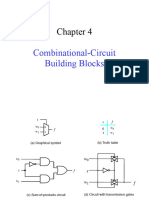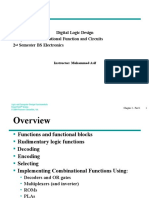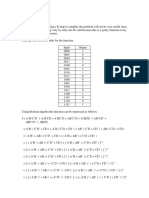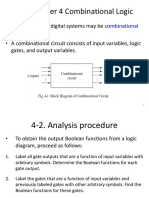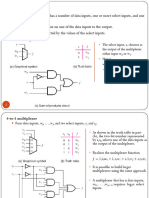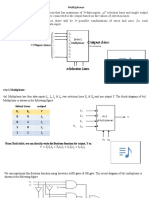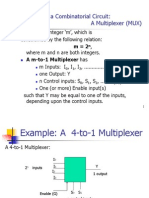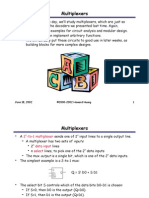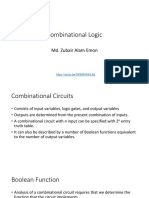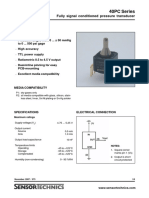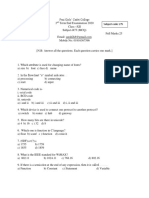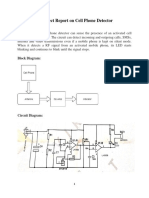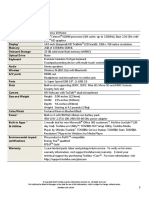0% found this document useful (0 votes)
55 views33 pagesChapter 4 Verilog
This document discusses combinational logic building blocks including multiplexers, decoders, encoders, and other circuits. It provides examples of how to implement logic functions using multiplexers and decoders. Figures show the logic symbols, truth tables, and circuit implementations for various multiplexers, decoders, encoders, and other combinational logic blocks. Application examples include priority encoders, binary-to-Gray code converters, ALU components, and barrel shifters.
Uploaded by
Griffin MoeCopyright
© © All Rights Reserved
We take content rights seriously. If you suspect this is your content, claim it here.
Available Formats
Download as PDF, TXT or read online on Scribd
0% found this document useful (0 votes)
55 views33 pagesChapter 4 Verilog
This document discusses combinational logic building blocks including multiplexers, decoders, encoders, and other circuits. It provides examples of how to implement logic functions using multiplexers and decoders. Figures show the logic symbols, truth tables, and circuit implementations for various multiplexers, decoders, encoders, and other combinational logic blocks. Application examples include priority encoders, binary-to-Gray code converters, ALU components, and barrel shifters.
Uploaded by
Griffin MoeCopyright
© © All Rights Reserved
We take content rights seriously. If you suspect this is your content, claim it here.
Available Formats
Download as PDF, TXT or read online on Scribd
/ 33


